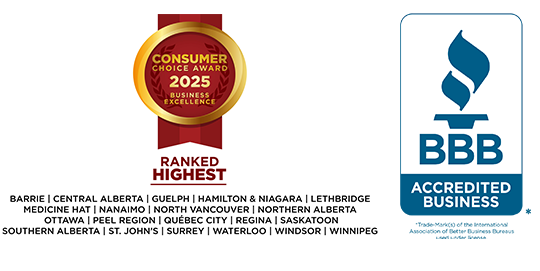Living debt-free. This is a concept very few Canadians can claim. Buying a home usually means taking out a mortgage and buying a vehicle more often than not, requires a loan. Then on top of that, there are those unexpected expenses that crop up that end up being paid for using a credit card, an overdraft or a line of credit because there simply isn’t enough money in the bank to cover them. So, how does one set the path for living debt-free? Here are a few things to think about:
Looking for a Mortgage? Make sure your monthly payments do not eat up the bulk of your take home pay. As a general rule, no more than 25% to 30 % of your family take home pay should be spent on mortgage payments each month. Planning a family in the not too distant future? Take into account a reduced family income during maternity / paternity leave periods and the possibility of one parent staying at home to raise the family. The last thing you want is to be mortgage poor. That big expensive home won’t mean much if you can’t afford to furnish it or make the payments.
Looking to buy a car? Keep it affordable. Spending approximately 15% of your take home pay on a vehicle including payments, insurance and gas is probably the most you want to spend. Be careful about the length of time you arrange for payments to finance it. Most new car warranties don’t extend beyond five years and usually have a mileage cap component built into them as well, so keeping the financing term at five years or less will mean your payments will be completed around the same time as the warranty expires and costly repairs could become a reality for your pocketbook. Once the financing payments are completed, consider setting aside a good portion of what you were paying each month to finance potential upcoming repairs. You may even want to consider the merits of buying a gently used vehicle, but it is important to do your research first, as the last thing you want is to assume someone else’s lemon!
Remember, when it comes to purchasing a home and / or vehicle, stick with what you can comfortably afford and don’t get caught up in the trap of keeping up with the Joneses!
Credit cards and lines of credit should not be used as a form of additional cash flow….because they aren’t! Almost every credit card available has a perk: travel miles, cash back or points that can be redeemed for groceries or towards the down payment on a vehicle are a few that come to mind. While utilizing these credit cards to take advantage of the perks seems like a good idea, moving towards living debt-free means that if you can’t pay the card off in full each and every month, you need to take a look at what you are using your credit card for. Review the last six months to a year’s worth of statements. What purchases were “wants” or “nice-to-haves” (like the new furniture and appliances when the ones you had were perfectly good) and what purchases were “needs” (like groceries and medications)? Now for those same months, take a look at your bank statements to see where you spent your family take home pay. For the sake of the exercise, eliminate the “wants” or “nice to haves”. Could you have paid off the credit cards in full each month?
Budget, budget, budget: Set a budget and stick to it! The goal is to set parameters to ensure you are not spending more than your income each month. You know how much your family take home pay is each month, now sit down and determine how it has to be spent. List your fixed expenses such as the mortgage, property taxes, car payments and insurances. Then review your previous month’s bank statements and credit card statements to determine how much on average you spend on food, entertainment, family activities, gas and repairs, utilities, clothing etc. and then set a limit that you will spend on these items. Factor in an amount for an “emergency fund” to avoid the pitfalls of using credit when the unexpected crops up (consider saving 10% of your gross income each month). Don’t forget that if you are currently carrying balances on your credit cards and lines of credit, you will also need to factor in monthly payment amounts that will see you paying these off in a specified period of time. Want to go on a family vacation? Decide where you want to go, research the cost, including transportation, accommodations, activities and souvenirs and start putting money away now. Don’t take the vacation unless you have the money set aside to pay for it. Use this philosophy for all expenses that fall into the “want” or “nice to have” categories. You will appreciate things more if they are paid for up front and maybe by the time you have the money saved for that “nice to have” item,, you will find that you now don’t really need it as badly as you once thought.
If you find that your current debt load obligations and on-going living expenses don’t align with your income, MNP Ltd. is here to help. You have options. Call an MNP Ltd. office near you for a free, confidential consultation with one of our qualified professionals to help you on your way to being debt-free!


